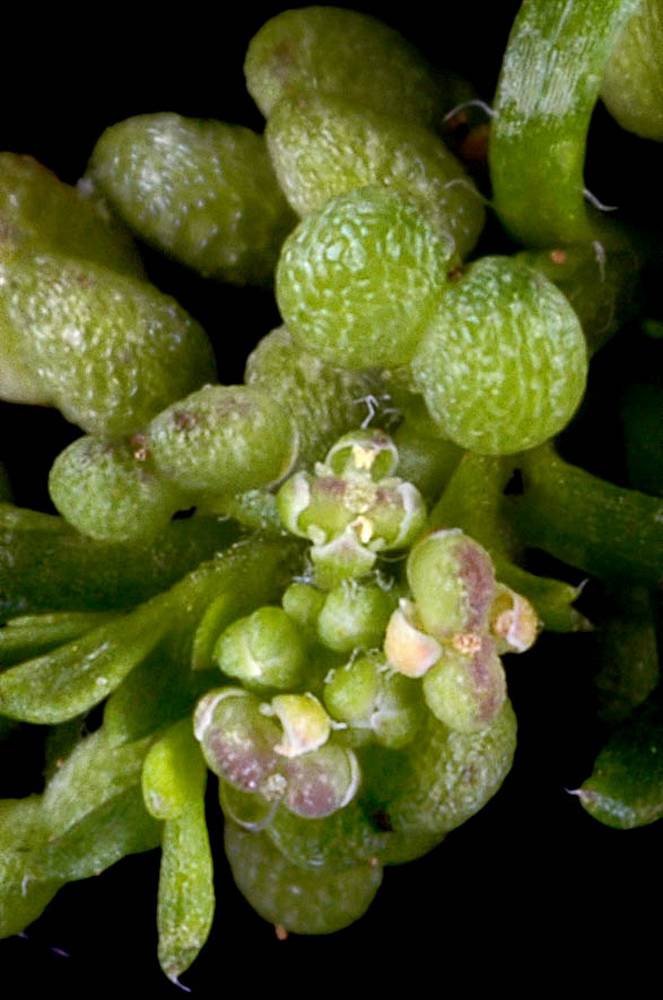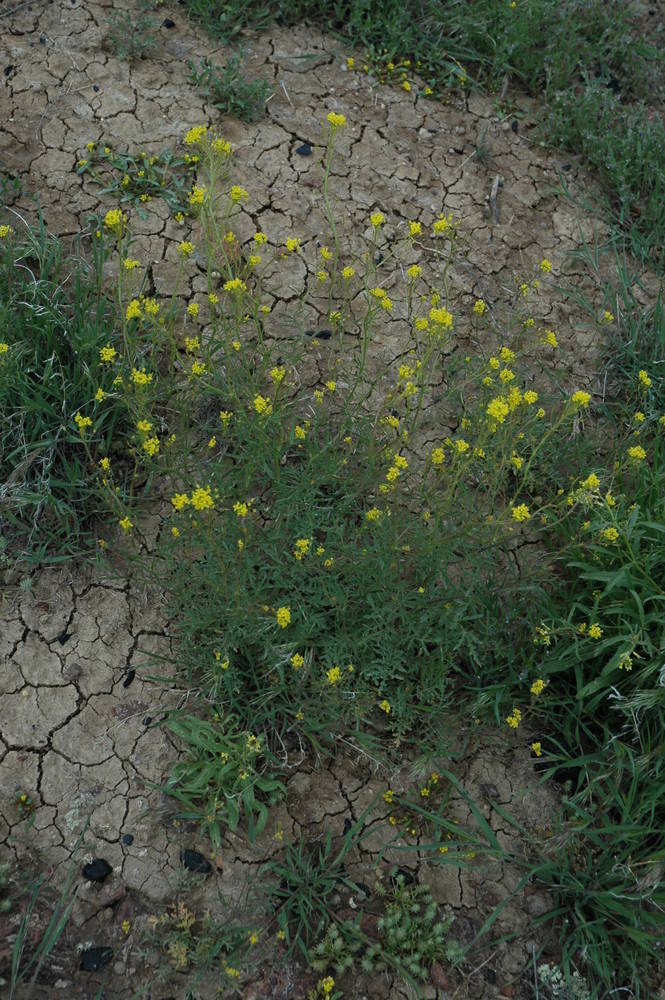Lepidium didymum
Brassicaceae
lesser swinecress, lesser wartcress
mustard family
often decumbent, 1–4.5(7) dm.
leafy or leafless, sometimes absent.
basal and/or cauline; simple or compound;
margins entire or variously divided, petiolate or sessile; without stipules.
not rosulate, 1–6(8) cm, 1- or 2-pinnatisect;
lobes entire or dentate, sometimes deeply lobed;
petioles 0.5–4(6) cm.
similar to basal, 1.5–3.5(4.5) × 0.5–1.2 cm, bases not auriculate, petiolate to subsessile.
rachises glabrous or pubescent with straight cylindrical trichomes, fruiting pedicels divaricate to horizontal; terete; straight or slightly recurved, 1.4–2.5(4) mm, glabrous or sparsely pubescent adaxially.
racemes; corymbs, or panicles, sometimes flowers solitary from a basal rosette.
sepals caducous, 0.5–0.7(0.9) mm;
petals elliptic to linear, 0.4–0.5 × ~0.1 mm, white;
stamens 2; median;
styles absent or obsolete, included in apical notch.
bisexual, hypogynous, radially or rarely bilaterally symmetric;
sepals 4; in 2 decussate pairs, usually free;
petals 4, forming a cross, rarely absent;
stamens (2 or 4)6; in 2 whorls, tetradynamous, rarely equal in length or in 3 pairs of unequal length;
median filaments free or rarely united;
anthers dithecal, dehiscing by longitudinal slits;
pollen 3(10)-colpate, trinucleate;
pistils 1, 2-carpelled;
ovaries superior;
placentation parietal or rarely apical;
septa complete, perforated, or lacking;
styles 1;
stigmas entire or 2-lobed, nectar glands receptacular.
indehiscent, didymous, 1.3–1.7 × 2–2.5 mm; apical notch 0.2–0.4 mm deep;
valves thick, rugose, glabrous, strongly veined; wingless.
typically 2-valved capsules (siliques or silicles), dehiscent or indehiscent; terete, 4-angled, flattened parallel to or perpendicular to septum; replums rounded or rarely winged.
ovate, 1–1.2 × 0.7–0.8 mm;
cotyledons incumbent.
uniseriately or biseriately arranged in each locule, rarely aseriate, mucilaginous or not when wetted, winged or wingless;
cotyledons incumbent or accumbent, conduplicate.
=32.
Lepidium didymum
Brassicaceae
Disturbed areas, fields, pastures. Flowering May–Oct. 0–300 m. Est, WV. CA, WA; north to British Columbia, eastern Canada and US, southern US; nearly worldwide. Exotic.
Cosmopolitan. 340 genera; 59 genera treated in Flora.
This family includes many economically important crop plants that are grown as vegetables, sources of vegetable oils (canola), or condiments (table mustard, horseradish, wasabi), or ornamentals. It also includes some 130 species of weeds, including Arabidopsis thaliana, a model organism in experimental and molecular biology. The limits of Brassicaceae (Cruciferae) have not changed in the past two centuries because of characteristic floral and fruit morphology. Generic delimitation within the family is often difficult because of the reliance on fruit characters to separate genera. The ovule number per ovary is a taxonomically important character, which can easily be determined by counting the number of seeds and aborted ovules in the mature fruit. The use of seed number alone may be taxonomically unreliable because many ovules fail to develop into seeds, especially late in the season due to the lack of sufficient pollen.
Ihsan Al-Shehbaz
- Local floras:
BC,
CA,
OR,
WA
- Local Web sites:
CalFlora,
CalPhotos,
Flora NW,
PNW Herbaria
WildflowerSearch
iNaturalist (observations)
USDA Plants Database
- LBJ Wildflower Center
- SEINet
- Plants of the World Online
- Encyclopedia of Life
- Wikipedia
- Google Image Search
- Local floras:
OR
- Local Web sites:
Flora NW,
PNW Herbaria
WildflowerSearch
iNaturalist (observations)
- LBJ Wildflower Center
- SEINet
- Plants of the World Online
- Encyclopedia of Life
- Wikipedia
- Google Image Search




